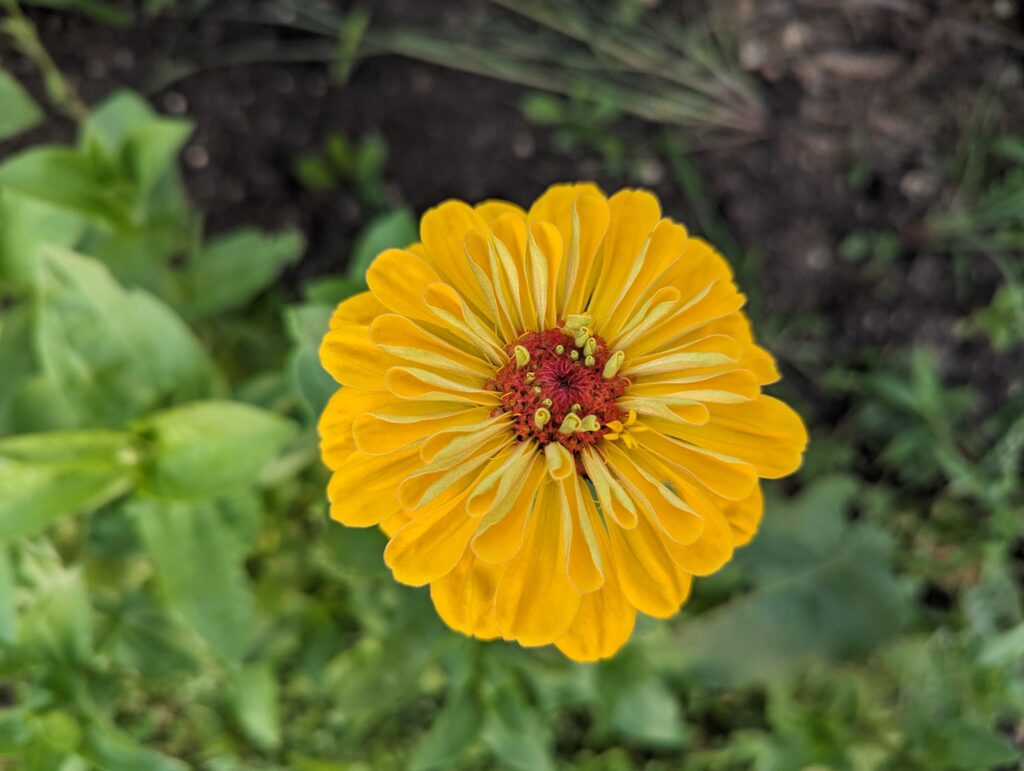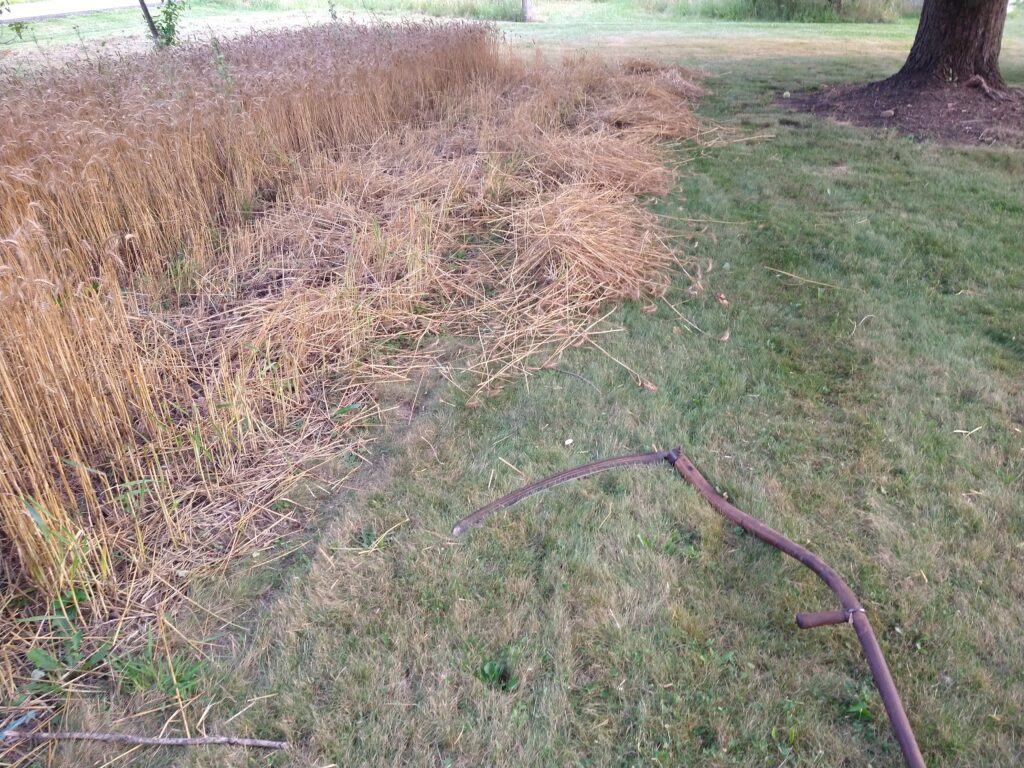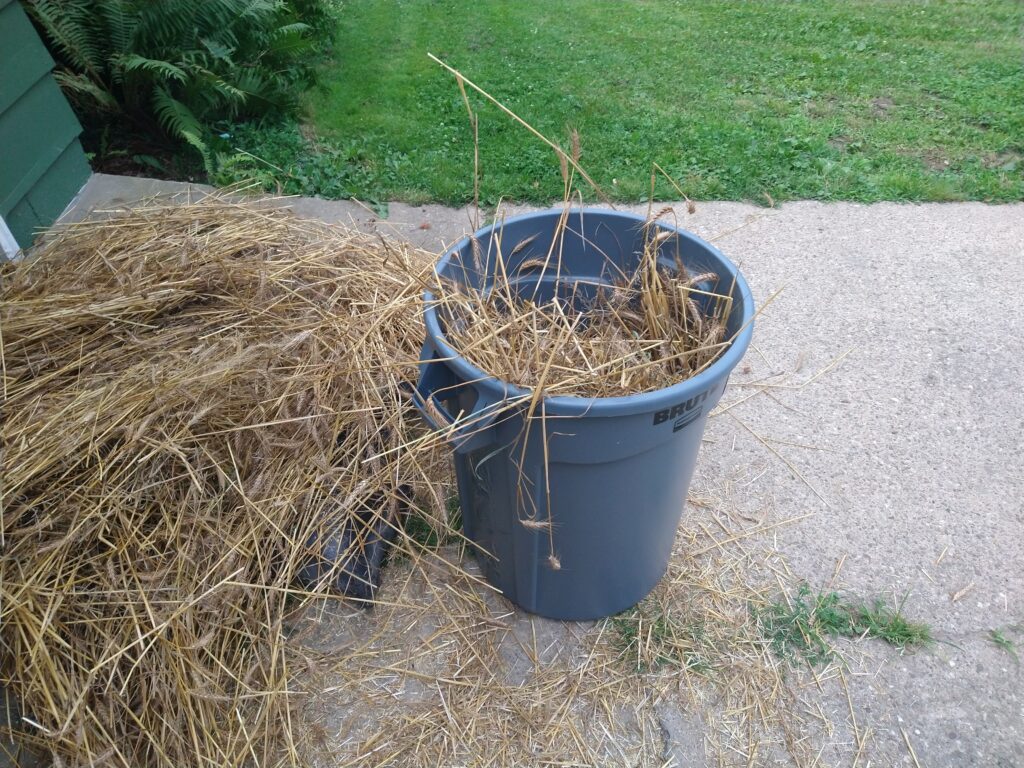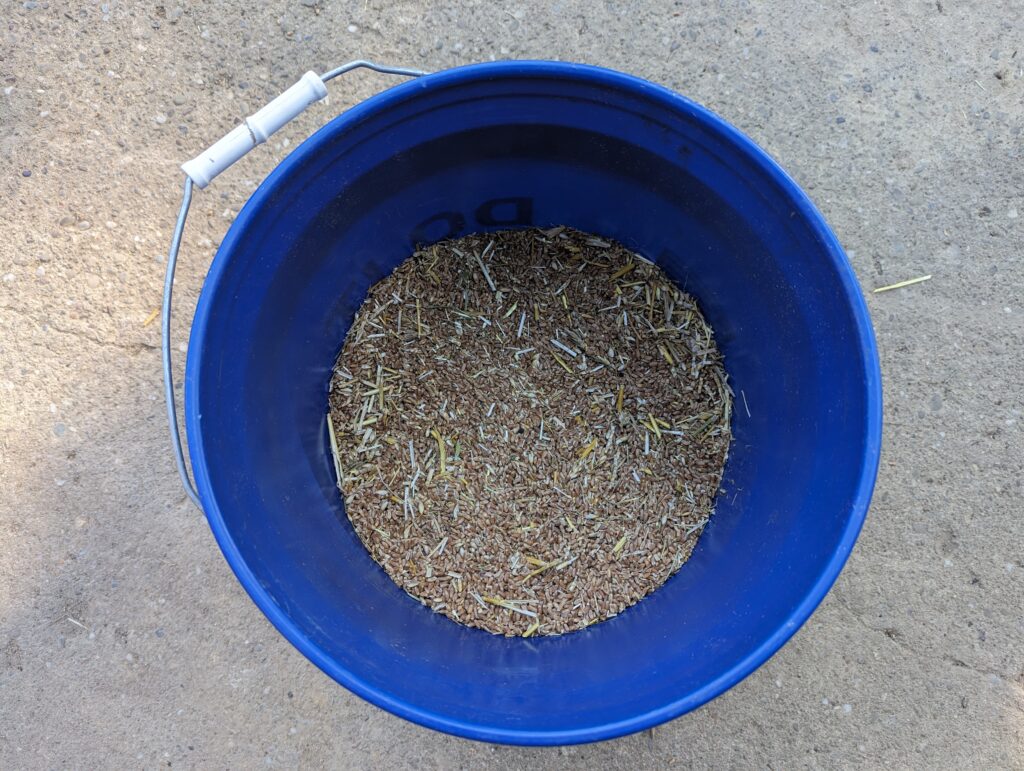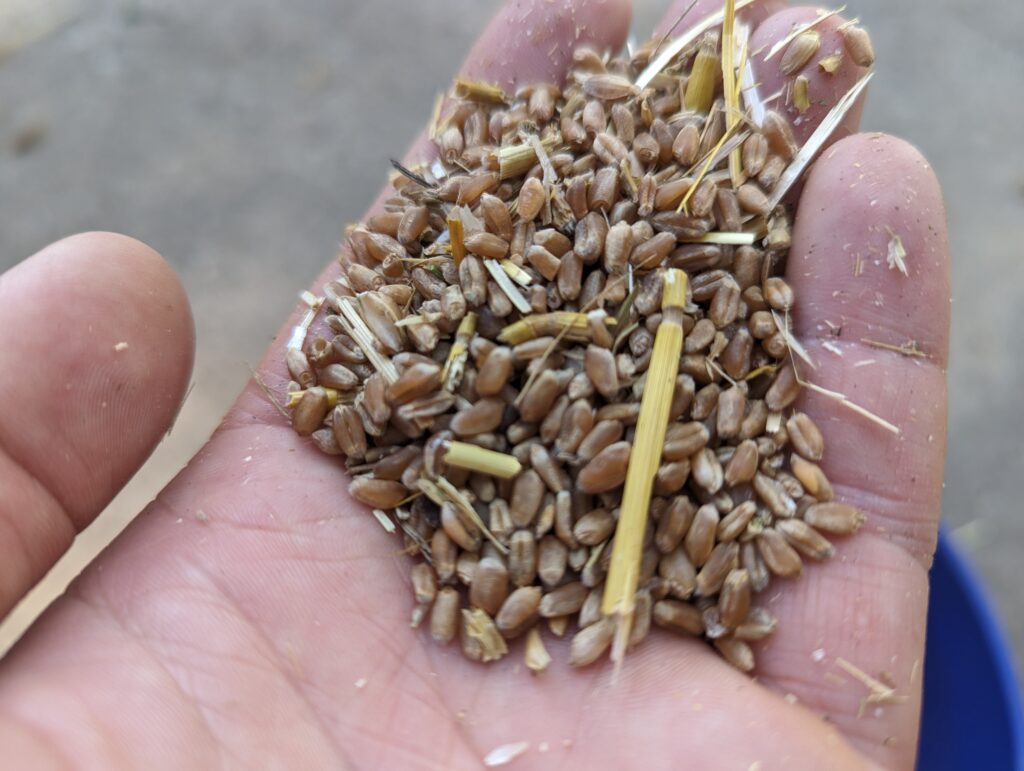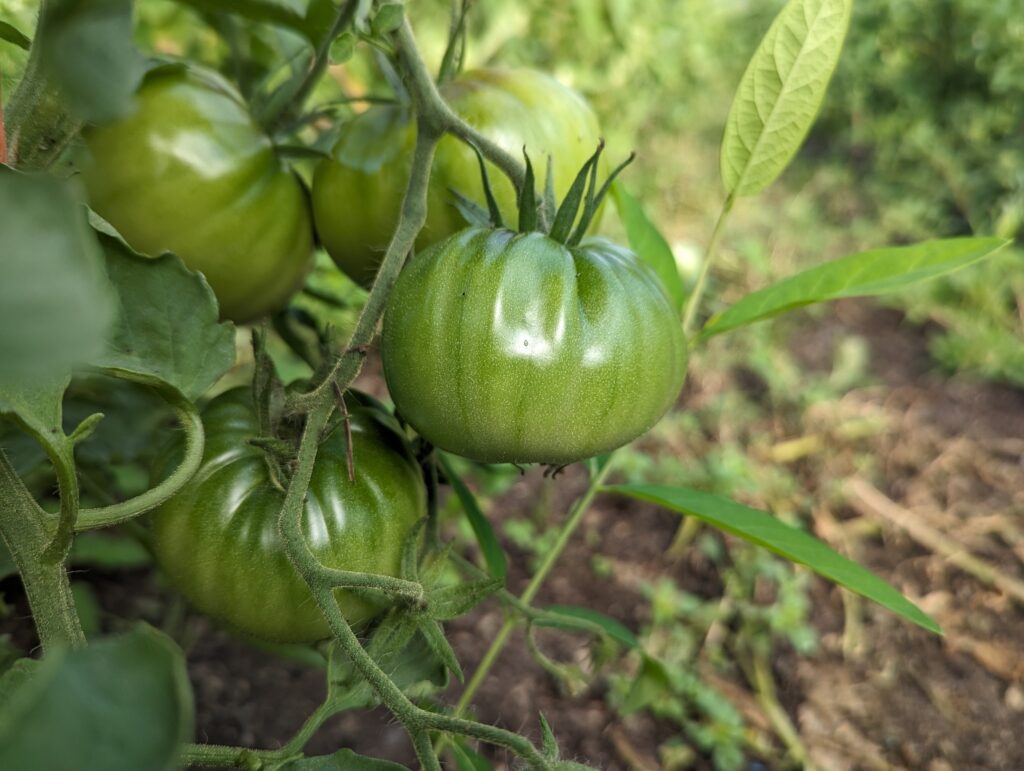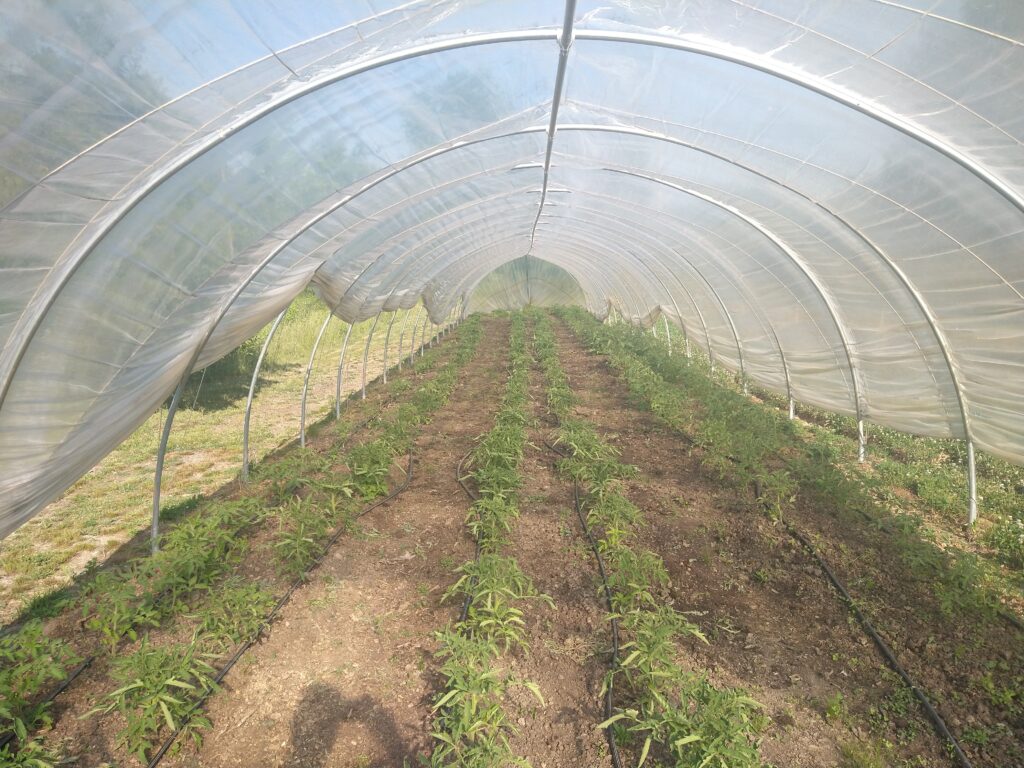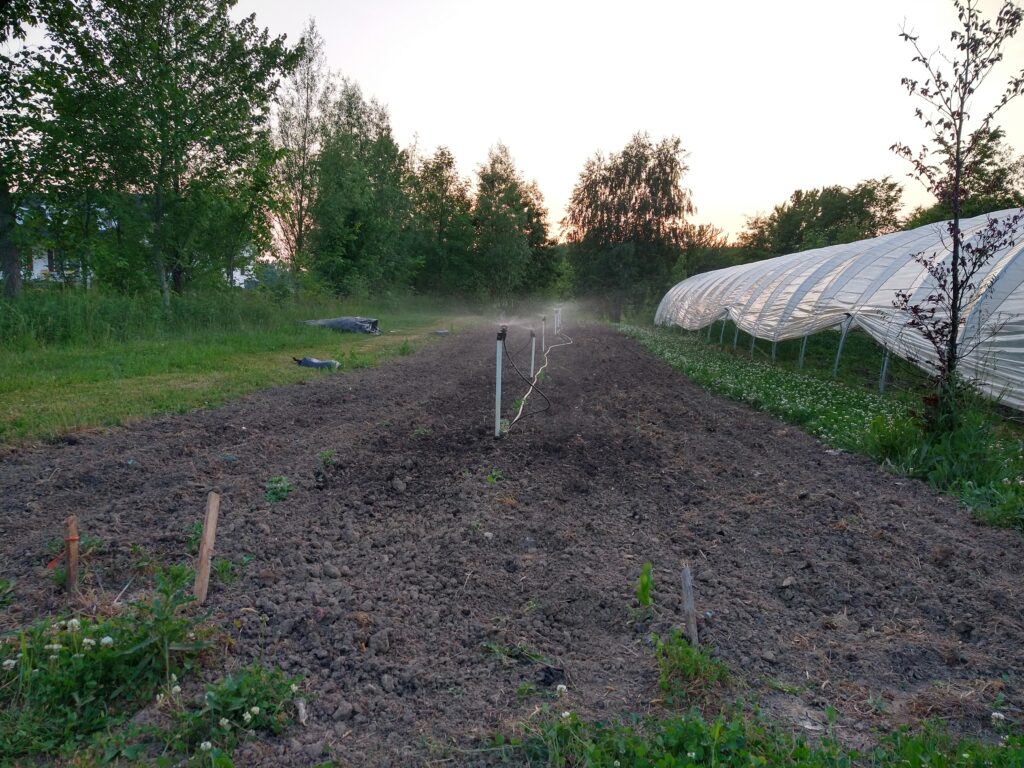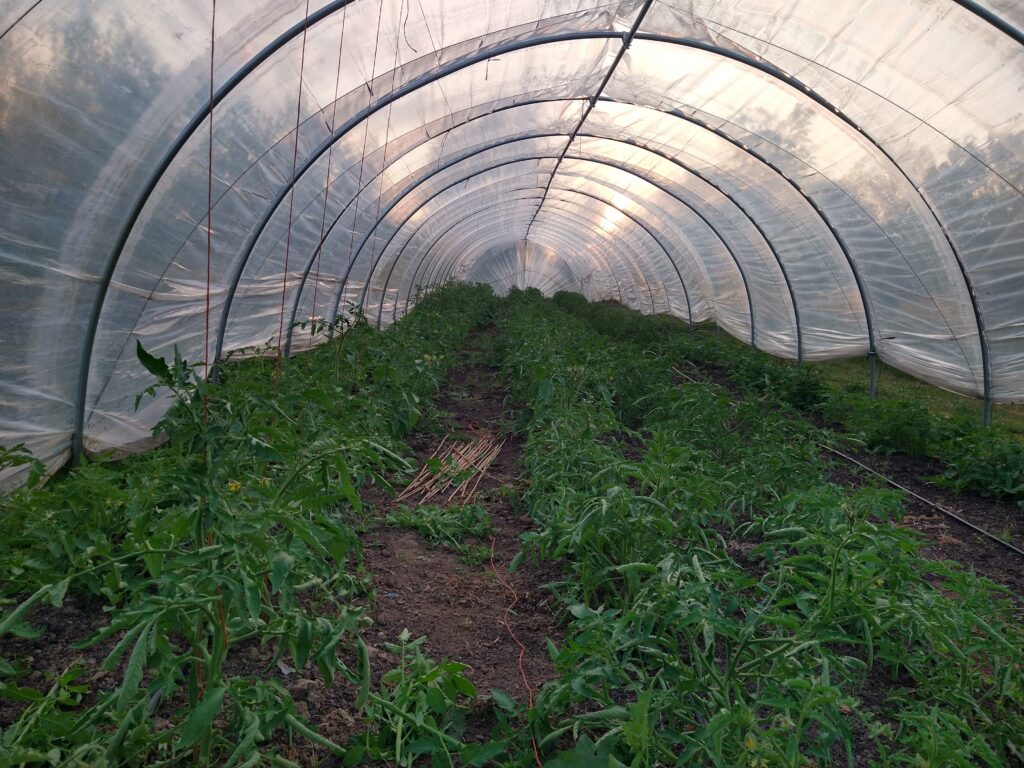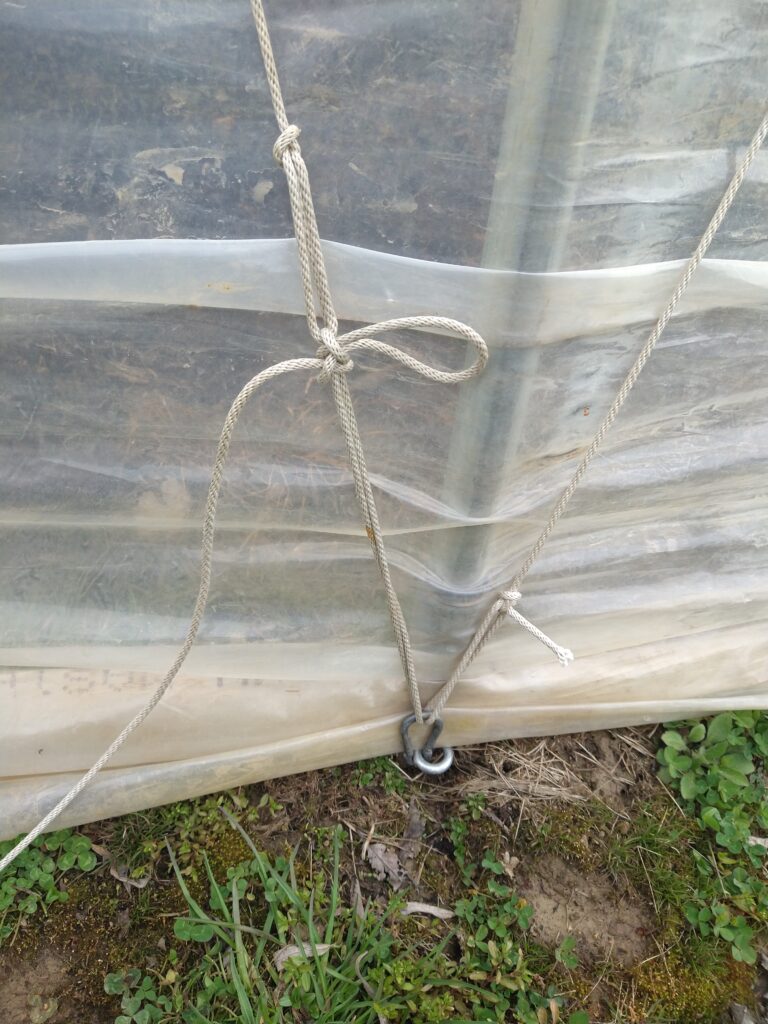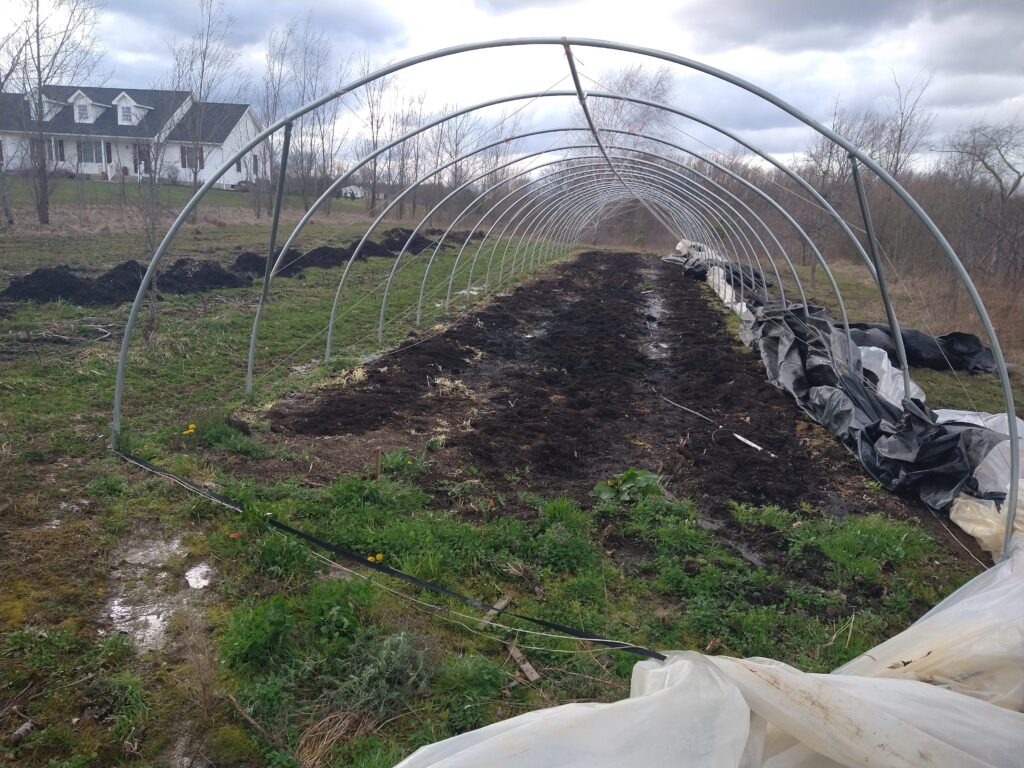Vacations bring the weeds
At the end of July I was out of town for a week. Well worth it, but the garden is now a jungle. I think every August this happens. Eventually you can’t outrun the weeds. Even with the minimal tillage I try to do. Next year I am definitely using landscape fabric in the tunnels. I’ve been avoiding it because its more plastic. I do see there are biodegradeable options now, though.
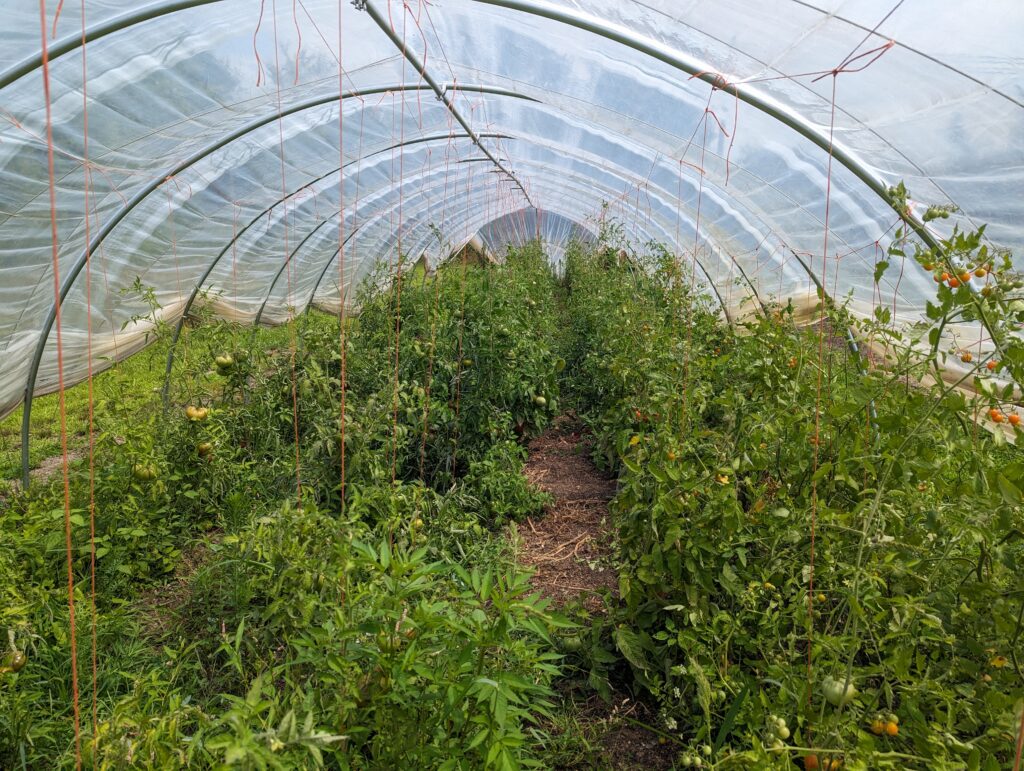
The tunnel above is still producing but tapering out for the season, besides the million roma tomatoes on the sides. The beefsteaks never got a solid 2nd or 3rd generation, and stopped growing. Not sure if this is a nutrition issue, or from the heat. I suspect the latter as the blossoms are dead and the cherry tomatoes are just trucking along.
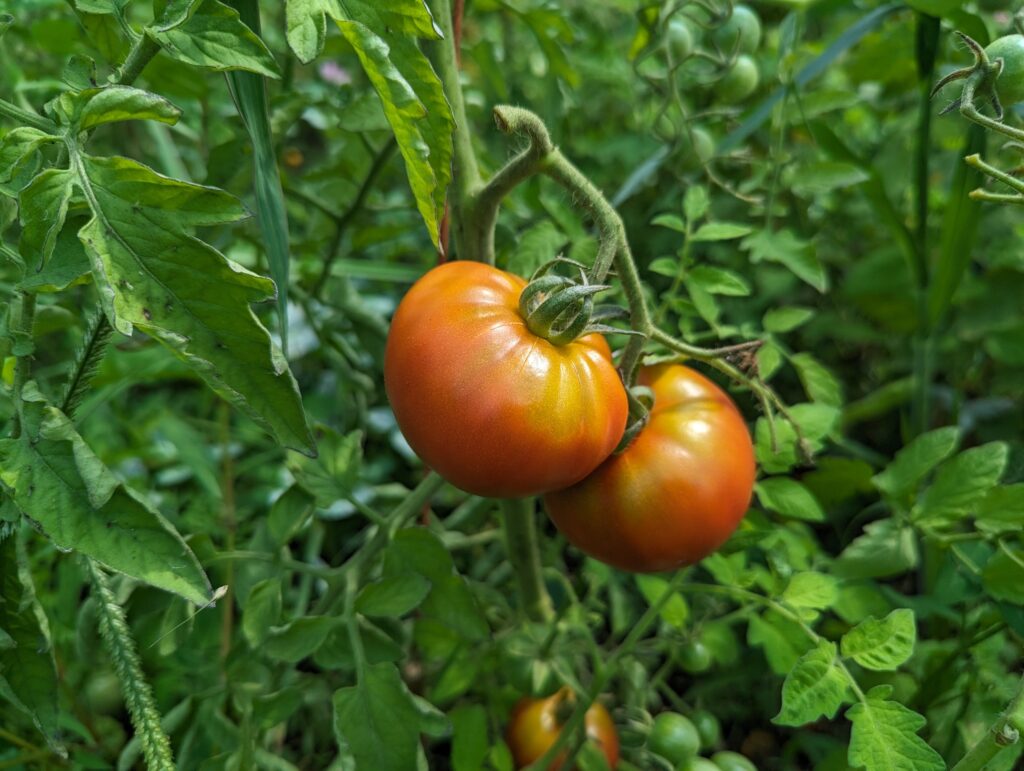
I also finally planted some Dahlia cut flower seeds I bought forever ago, and they look super cool.
